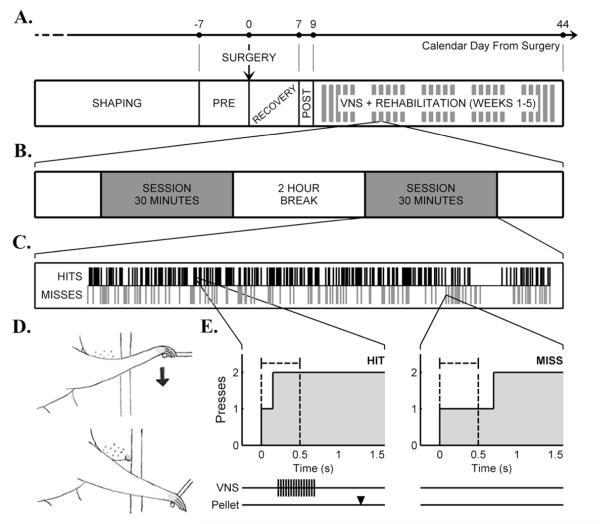Figure 1.
A)Experimental timeline illustrating shape training, pre-lesion training, surgery, recovery, post-lesion training, and VNS+rehabilitative training. Negative value indicates training days prior to infarct, and positive values are post-infarct days. Clustered thick gray bars indicate that VNS+rehabilitative training occurred 5 days a week (weekdays only) for 25 days. B) A rehabilitative training day was composed of two 30 minute sessions per day with a two hour break between sessions. C) Shown is a representative 30 minute training session. The black bars on top specify hit trials in which VNS was delivered during rehabilitative training. The gray bars on bottom indicate miss trials were the rat failed to achieve the task requirements, no pellet or VNS delivered. D) Sketches demonstrating the movements necessary for the bradykinesia assessment task. A rat was required to press the spring-loaded lever in the downward direction twice within 0.5 s. E) Two examples of lever press data collected from a series of trials performed by a rat that received VNS during rehabilitation. The black dashed lines indicate the hit time window of 0.5 s. In the depicted hit trial, two presses occurred within the hit time window. Below the hit trial example, the repeated black bars demonstrate the VNS pulse train: 0.5 s 30 Hz pulse train at 0.8 mA 100 μs pulse width. The black arrowhead marks when the food pellet arrived in relation to stimulation. On the right, a miss trial occurred when a rat failed to press the lever twice within the dashed lines. No VNS or pellet was delivered.

